No matter where you travel across the world, you're sure to find an indigenous liquor you can partake of. From earthy-tasting Mexican pulque to the sharp flavors of Scandinavian aquavit, indigenous liquors embody their respective regions' rich heritage and are integral to many cultures. They are often drunk during ceremonies or celebrations or simply enjoyed as relaxing beverages.
In this post, we will explore some of the most popular indigenous liquors from around the globe. Whether you're a seasoned liquor connoisseur or a curious newbie looking to try indigenous liquor for the first time, you'll be guaranteed to find a spirit that will delight your taste buds.
1. Traditional Brews of South America: Uncovering Pisco and Cachaça
South America, a continent of vivid colors, diverse landscapes, and rich cultural heritage, boasts some of the world's most famous indigenous liquors. Among the continent's rich treasures, pisco and cachaça stand out as celebrated spirits that encapsulate the essence of their respective countries.
Pisco
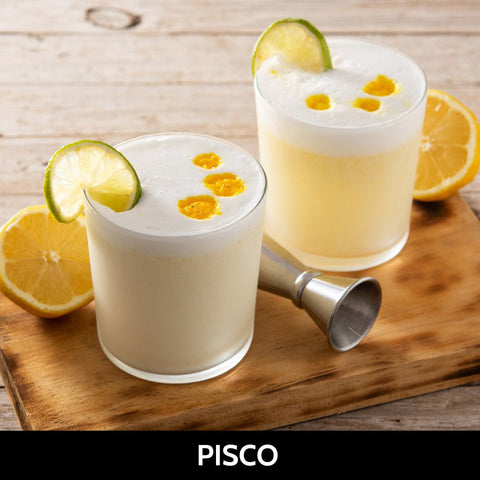
Pisco is a clear or yellowish-amber brandy made from fermented grape juice. While the neighboring countries of Chile and Peru claim to be the original home of the indigenous spirit, its roots date back to the 16th century when Spanish conquerors introduced grapevines to the region.
However, while Pisco is produced in Chile and Peru, each country has unique production methods. Chilean pisco is typically made from various grapes, and some variants of the Chilean spirit are aged in wooden casks like cognac. In contrast, Peruvian pisco is made from Muscat grapes and aged in neutral vessels like glass or stainless steel.
The resulting drink is a versatile spirit you can enjoy neat, on the rocks, or in cocktails. If you love sour cocktails that pack a punch, you might enjoy the iconic Pisco Sour cocktail, a delightful blend of pisco, lime juice, simple syrup, and an egg white shaken to bubbly perfection.
Cachaça
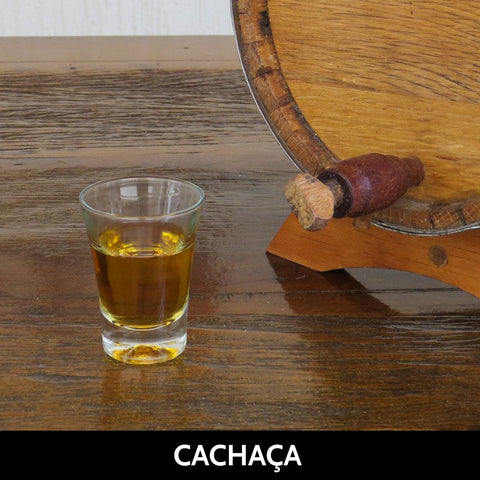
Cachaça, Brazil's beloved national liquor, is a classic sugarcane spirit that predates even rum. Distilled from fermented sugarcane juice like some rums, it boasts a diverse flavor profile ranging from fruity and floral to earthy and complex, depending on the distillation and aging process.
Like pisco, cachaça is a versatile spirit you can enjoy neat, on the rocks, or in cocktails. If you love boozy, sweet-tasting cocktails, you might enjoy the popular Caipirinha made with cachaça, lime, sugar, and ice.
2. Asian Elixirs: Delving into Sake and Shochu
Asia, the world's largest and most diverse continent, is home to various indigenous liquors that span the spectrum of flavors and traditions. Two notable spirits from the continent include sake and shochu, both hailing from Japan and offering distinct experiences for liquor connoisseurs.
Sake
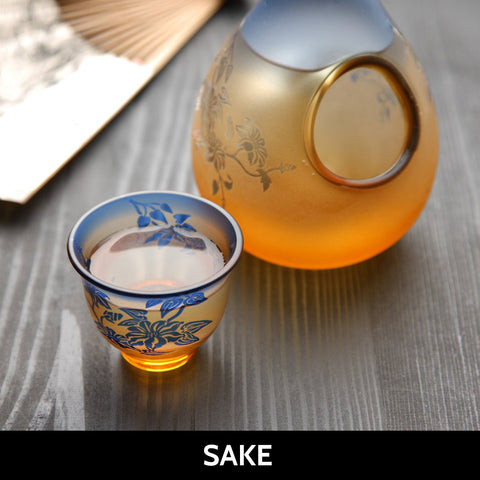
Sake is a fermented rice wine that has been integral to Japanese culture for centuries. It's made from rice, water, yeast, and koji mold, resulting in a drink ranging from crisp and light to rich and complex. This diverse flavor profile makes sake a perfect companion for Japanese dishes like sushi, sashimi, and grilled fish. It also makes it a versatile spirit you can imbibe neat or in cocktails.
Shochu
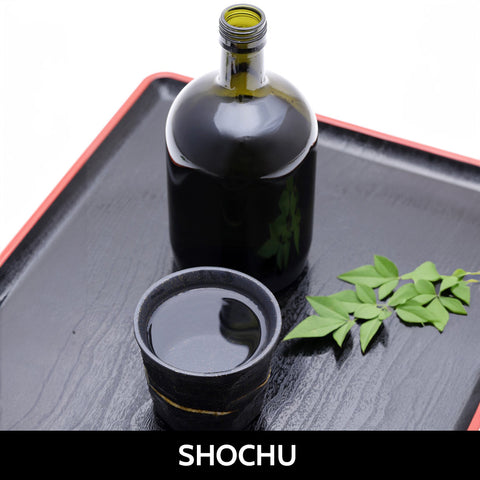
While sake might be the more popular spirit, shochu is another Japanese gem that deserves attention. It's a distilled spirit crafted from various base ingredients like barley, rice, sweet potatoes, and even buckwheat. It has a higher alcohol content than sake, typically ranging from 20 to 40%. If you want to enjoy a potent drink showcasing Japan's diverse tastes, shochu is a must-try indigenous liquor.
3. African Spirits: The Mystique of Amarula and Mahua
Africa, a continent known for its incredible biodiversity and cultural tapestry, also offers a wide array of indigenous liquors that embody the rich cultural heritage of its people. Two exceptional spirits from the continent include Amarula and Mahua.
Amarula
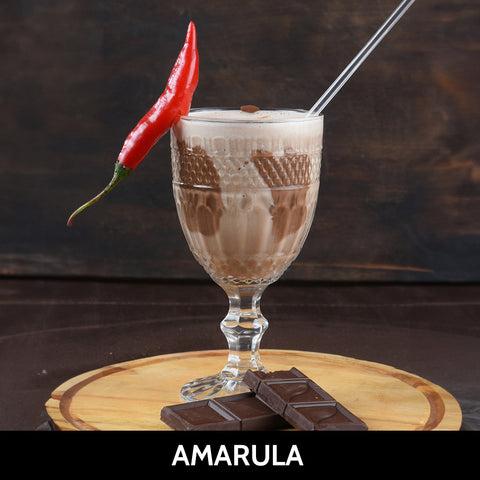
Amarula is a creamy, velvety liquor made from the fruit of the marula tree that's native to Southern Africa. With its sweet and mildly acidic flavor, the marula fruit is harvested, fermented, and distilled to create Amarula. The result is an exquisite liquor with marula fruit, caramel, and vanilla notes. Often enjoyed over ice or in cocktails, Amarula is an indigenous spirit sure to delight your taste buds if you like creamy liqueurs like Baileys Irish Cream.
Mahua
Mahua is a distilled spirit made from the fermented flowers of the mahua tree. The mahua tree is native to India and parts of Southeast Asia, and its flowers have been used to make liquor for hundreds of years. If you're searching for an indigenous liquor with a bold and earthy flavor, you might enjoy Mahua.
4. Native American Distillates: Exploring Chicha and Pulque
North and South America are home to a rich and diverse range of indigenous liquors. Among the region's rich treasures, two fermented beverages, chicha, and pulque, stand out as two exceptional liquors.
Chicha

Chicha is a fermented spirit made from maize or corn. Native American cultures have consumed it for centuries, and it's popular in many parts of Central and South America — especially Peru.
Chicha is made from various maize varieties, and it can have a wide range of flavors, depending on the ingredients used, the fermentation process, and the aging duration. While chicha is often enjoyed as a refreshing beverage during celebrations and ceremonies, you can also enjoy it in cocktails such as the chicha sour made with chicha, lime juice, simple syrup, and egg white.
Pulque
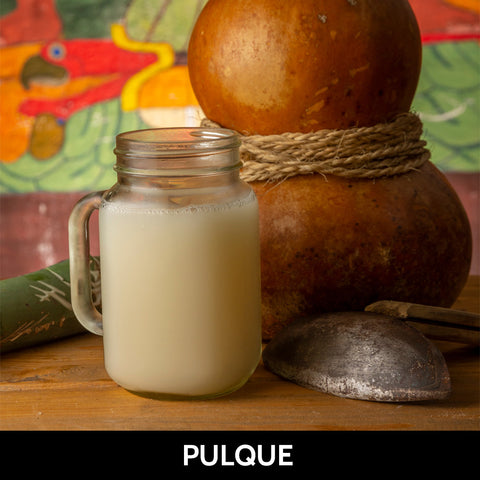
Pulque is an indigenous Mexican spirit made from the fermented sap of the agave plant. A revered beverage with roots dating back over a thousand years, pulque was once considered a sacred beverage by the Aztecs. Today, pulque is still held in high esteem and often consumed during cultural celebrations and rituals.
Pulque has a milky texture and a sour yeast-like taste, and it's often consumed on its own, chilled or at room temperature. However, it also pairs well with cocktails such as the Pulque Margarita, which is made with pulque, lime juice, and tequila.
5. European Gems: Aquavit and Absinthe's Cultural Significance
With its deep history and diverse cultures, Europe has given birth to some of the world's most iconic spirits, such as vodka, gin, and whiskey. However, away from these popular spirits, some lesser-known but exceptional indigenous spirits from the region include Aquavit and Absinthe.
Aquavit
Native to Scandinavia, aquavit (often spelled akvavit) is a clear spirit steeped in tradition. Its name translates to ''water of life,'' a nod to its medicinal properties. Like vodka, aquavit is typically distilled from grain or potatoes. Subsequently, like gin, it's then infused with a blend of botanicals, typically caraway, dill, and cumin.
The result is a complex, bold, and aromatic drink with herbal and spicy undertones. Aquavit is an integral part of Scandinavian culture, and it's often consumed on special occasions like Christmas and New Year's Eve. While it's typically served chilled, you can drink it neat at room temperature to discern its nuanced flavors. Alternatively, you can also enjoy it on the rocks or in cocktails.
Absinthe
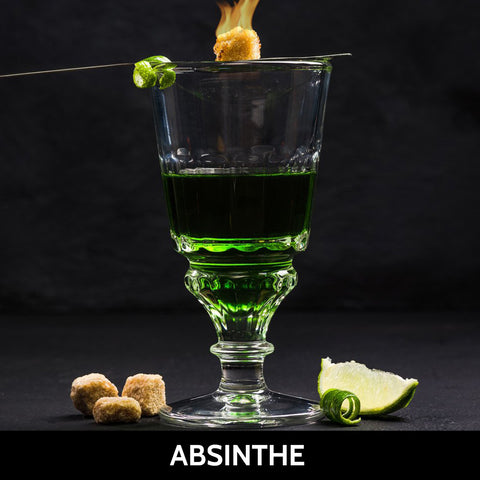
Absinthe is a distilled spirit flavored with wormwood and other botanicals. It's produced in France and Switzerland and has a somewhat controversial history. While it was popular in the 19th and 20th centuries, particularly among artists and writers, it was banned in many countries in the early 20th century because of its purported hallucinogenic properties. However, many countries lifted the ban in the late 20th century.
Absinthe is often diluted before drinking due to its high alcohol content. While some people enjoy it with a dash of water, it's especially popular in cocktails such as the Sazerac, which is made with absinthe, cognac or rye whiskey, sugar, and Peychaud's Bitters.
6. Pacific Island Potions: Kava and Tepache Revealed
The Pacific Islands are home to two enchanting libations: Kava and Tepache. These spirits are not only a source of refreshment but also hold deep cultural significance for the communities that have crafted them for generations.
Kava
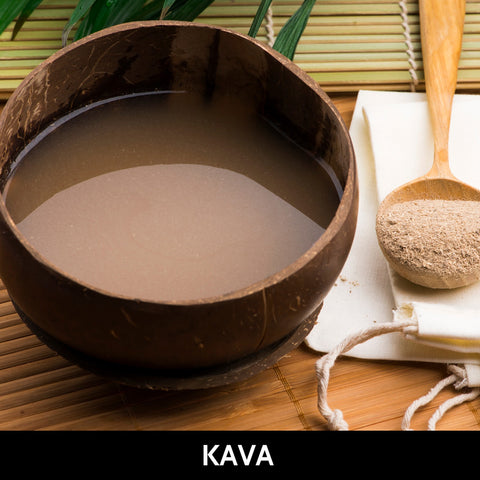
Kava is a revered drink known for its relaxing and calming effects, and it's often used to induce sleep and reduce stress. It's made from the root of the kava plant and prepared by pounding or grinding the kava root into a fine powder. Afterward, it's mixed with water to create a cloudy, earthy-tasting spirit.
In the Pacific Islands, kava is more than just a drink. It's an integral part of Pacific Islander culture and is often consumed during ceremonies and social gatherings. While its earthy and bitter flavor may be an acquired one, kava offers a unique drinking experience, making it a cultural gem.
Tepache
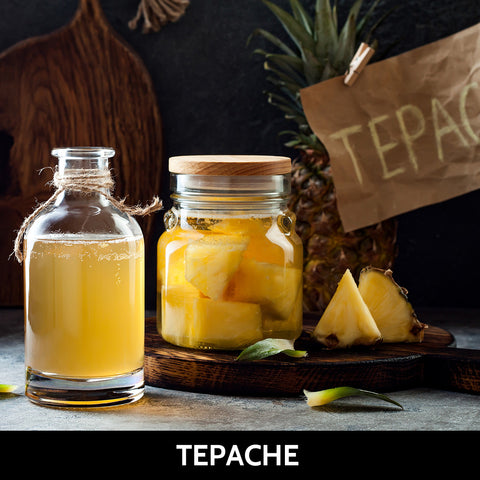
Tepache is a fermented indigenous spirit popular in Mexico and Central America. It's made from pineapple rinds and other ingredients like sugar, cinnamon, and cloves. The result is an effervescent drink with a delightful balance of sweet and tangy flavors.
Unlike other indigenous spirits on this list, tepache has a relatively low alcohol content, and some people even top it off with beer to increase its potency. So, if you want to indulge in a refreshing indigenous spirit that doesn't pack a punch, tepache is an excellent choice.
7. Middle Eastern Secrets: Arak and Raki Unleashed
Arak and raki are two anise-flavored drinks that showcase the Middle East's rich history and cultural diversity.
Arak
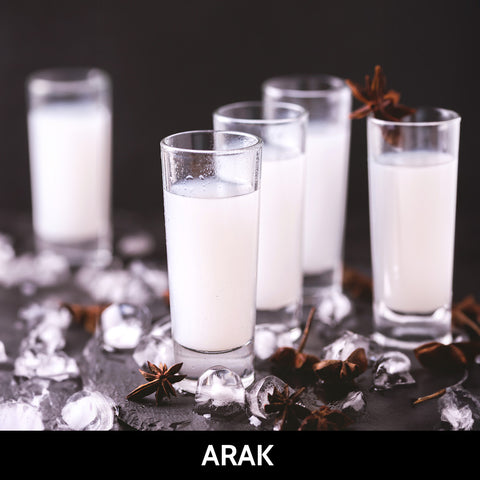
Arak is a clear, distilled spirit typically made from fermented grapes and flavored with anise seeds. It's popular in Lebanon, Syria, Jordan, Israel, and other parts of the Middle East. Arak has a strong anise or licorice flavor and is typically served with a splash of water, though it's also used in cocktails.
Sipped slowly, Arak is the perfect accompaniment to meze, the Middle East's beloved array of small dishes similar to Spanish tapas. Beyond its exquisite taste, Arak embodies the cordial spirit of Middle Eastern hospitality, and it's often enjoyed among friends and family during social gatherings. If you want to indulge in an indigenous spirit that pairs well with cheeses, meat dishes, and seafood, Arak is an excellent choice.
Raki
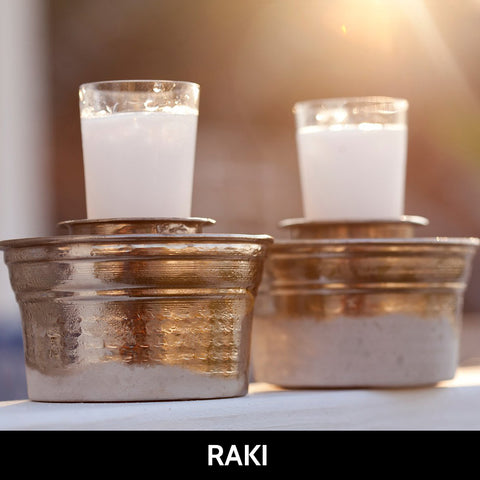
Raki is a distilled spirit flavored with anise seeds and other botanicals. It's popular in Turkey and various parts of the Balkans. Raki is typically enjoyed with water and ice, turning milky white as the anise oils are released. Like Arak, Raki is also enjoyed alongside meze or as an aperitif.
8. Unique Indian Liquors: Feni and Toddy on the Spotlight
India, a land of rich cultural diversity and culinary treasures, offers a wide array of indigenous liquors that showcase the country's vibrant traditions. Among the country's popular spirits, Feni and Toddy stand out as exceptional spirits, each with a distinct character and cultural significance.
Feni
Feni (often misspelled as fenny) is a potent liquor made from cashew apples or coconut palm sap. The cashew variant, known as ''Cashew Feni,'' has a fruity, nutty flavor, while ''Coconut Feni'' has a tropical taste.
Feni is popular in the Indian state of Goa, where it's a staple during celebrations and festivals. While it's traditionally enjoyed neat, it's also a popular cocktail mixer in drinks like the Feni Martini and the Feni Mojito.
Toddy
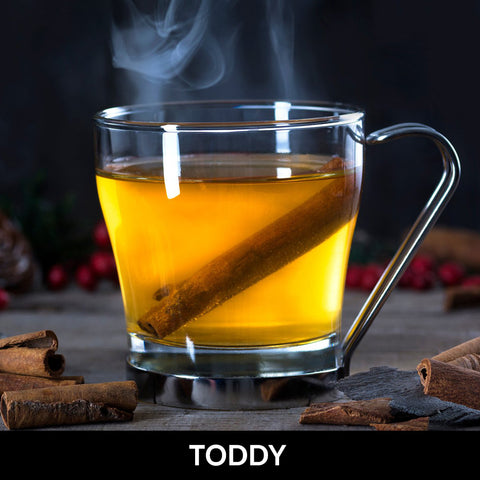
Toddy is a fermented beverage made from various palm trees' sap. It's popular in many parts of India, especially in the south, where it's enjoyed alongside regional dishes.
If you want to indulge in a mildly alcoholic beverage with a sweet and tangy flavor that pairs well with food, you might enjoy Toddy.
Conclusion
Indigenous liquors from around the world offer a unique glimpse into the cultures and traditions of various regions. Whether you're looking for an unconventional cocktail ingredient or a truly authentic cultural experience, these indigenous liquors will surely give you a delightful and memorable drinking experience.
FAQs
What Are Indigenous Liquors?
Indigenous liquors are alcoholic beverages that are deeply rooted in the cultural traditions and heritage of specific regions. They are typically made using locally available ingredients and traditional production methods, symbolizing their respective cultures.
What Is the Difference Between Indigenous Liquors and Other Liquor Types?
Indigenous liquors are typically made in particular regions using locally sourced ingredients and traditional production methods unique to the area. Other types of liquor, like vodka, gin, and whiskey, are generally made from common ingredients and techniques practiced worldwide.
Are Indigenous Liquors Safe to Consume?
Yes, indigenous liquors are safe to drink when produced and handled following stringent regulatory guidelines. However, it's essential to exercise caution and ensure you're purchasing them from reputable sources, particularly when trying them in their native regions.
How Can I Incorporate Indigenous Liquors Into Cocktails?
Indigenous liquors can add depth and character to various cocktails. For example, you can use Feni as a substitute for gin to make a Martini or Pulque as a substitute for tequila to make a margarita. Just be sure to balance the indigenous liquor with other ingredients to make a balanced cocktail.

